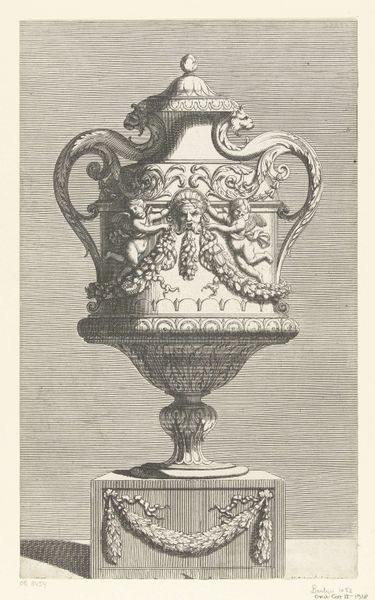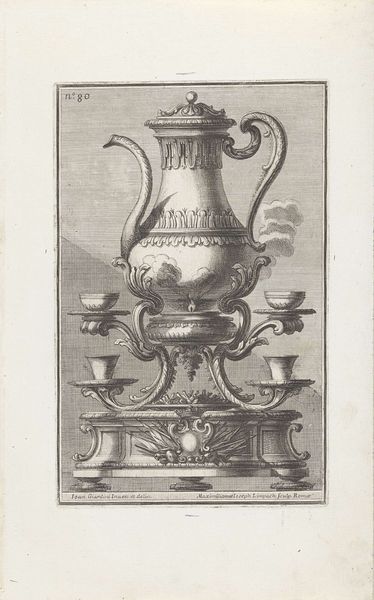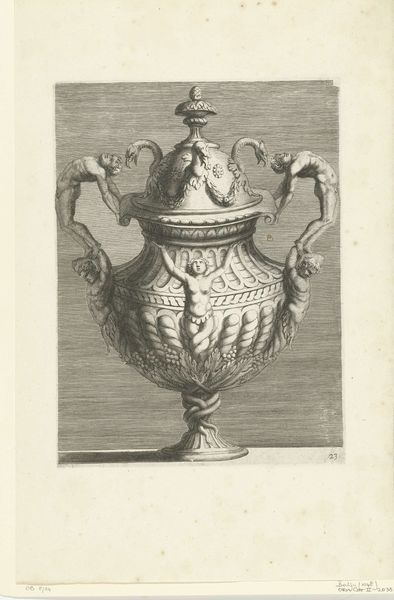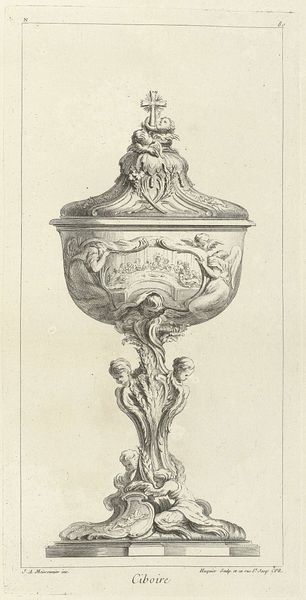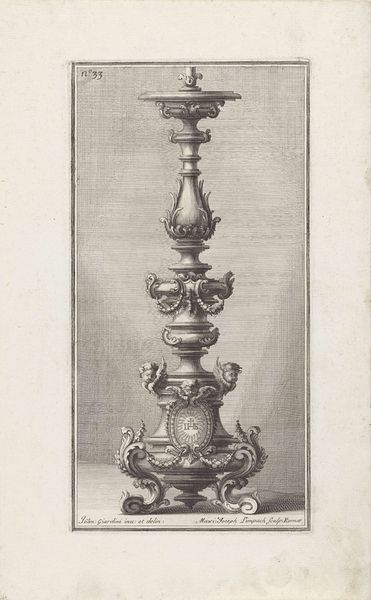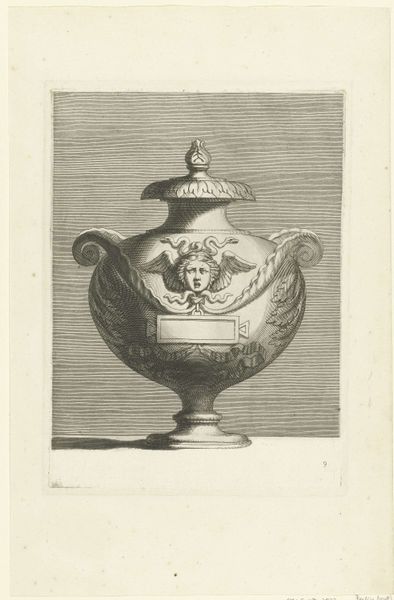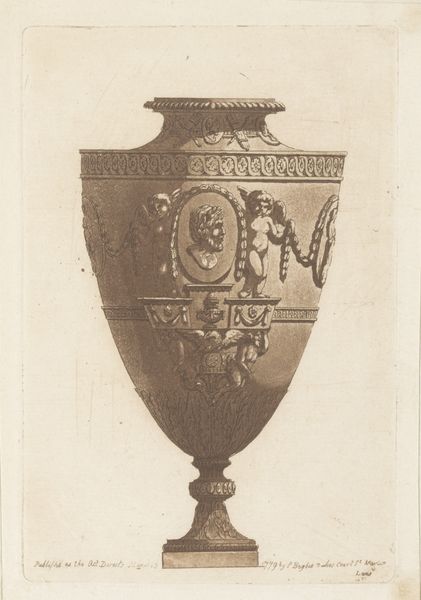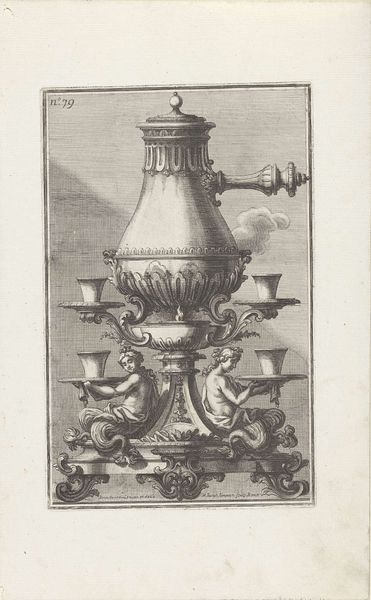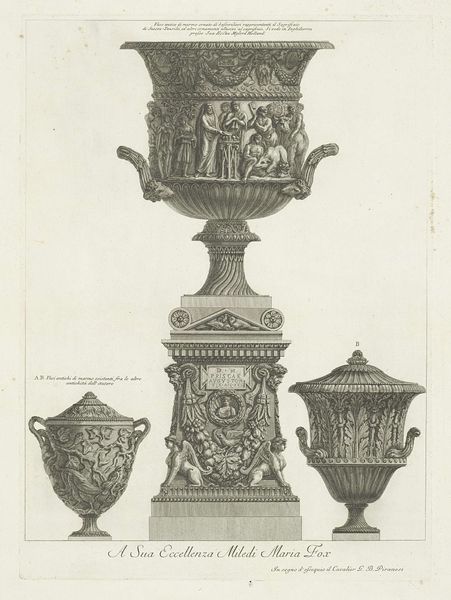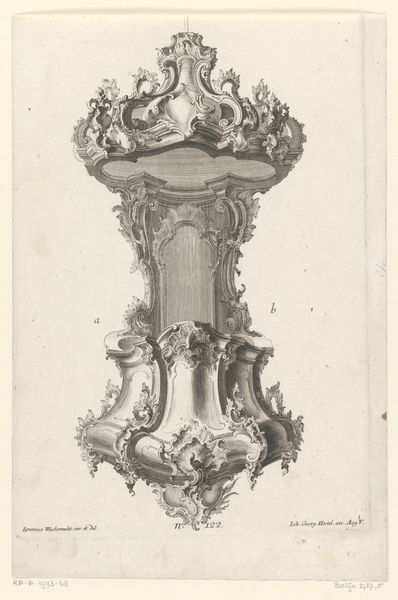
engraving
#
baroque
#
old engraving style
#
form
#
line
#
decorative-art
#
engraving
Dimensions: height 296 mm, width 154 mm
Copyright: Rijks Museum: Open Domain
Curator: Look at this engraving, created by Maximilian Joseph Limpach in 1714, currently held at the Rijksmuseum. It's titled "Vase with putto and woman running into leaf ornament". Editor: It strikes me as wonderfully excessive! Such ornate detail, crammed into a rather contained frame, gives it this air of controlled exuberance, doesn't it? Curator: Absolutely. The Baroque style is all about that visual drama. This was a period of immense social and political change, where the Church and aristocracy used art as a powerful tool to communicate status and power. Think about the sheer amount of labor required to design, engrave, and disseminate prints like these – they were not simply decorative. Editor: Yes, the symbolic weight is impossible to ignore. The putti, those cherubic figures, hint at divine blessings and innocent beauty, juxtaposed with a woman morphing into foliage – perhaps a nod to the Ovidian myths of transformation and the wildness of nature. Curator: That reading aligns well with the period. The engraving wasn't necessarily about representing an existing object; it’s offering a template for aspirational design. Think of the wealthy families commissioning similar, real-world versions of this fantastic vase. It demonstrates sophisticated taste and access to skilled artisans. Editor: I find the way the floral garlands soften the formal structure really intriguing. It hints at fleeting pleasures and the ephemeral nature of beauty, tucked within the hard lines of an object intended for posterity. There's a tension there, between permanence and transience. Curator: And notice how even in print form, the engraving tries to mimic texture – to replicate the experience of polished stone or metal. This speaks to a growing appreciation for sensory experience within the art world of the early 18th century and its commodification through artistic mediums. Editor: This artwork embodies a fascinating convergence of faith, luxury, and mortality – quite a powerful statement contained within this elaborate little world. It makes me consider what symbols and designs our contemporary era might leave behind to communicate our current moment to future generations. Curator: Indeed, it gives us much to reflect upon concerning the cultural ambitions embedded within even seemingly simple decorative objects. The layers of social aspiration encoded in what seems to be an ornamental piece reveal how intertwined our history is.
Comments
No comments
Be the first to comment and join the conversation on the ultimate creative platform.
